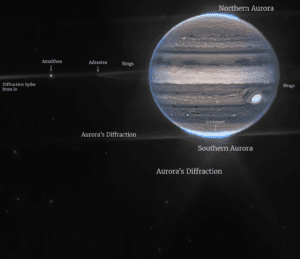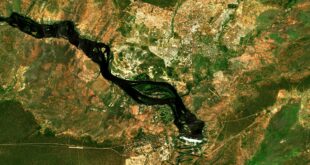
Edinburgh, 24 August 2022. – NASA’s James Webb Space Telescope has captured new images of our Solar System’s biggest planet, Jupiter, showing fine details along with its rings, satellites, and even galaxies in one image, giving scientists more information on the planet’s inner processes.
The two images were taken by the observatory’s Near-Infrared Camera (NIRCam), and have been mapped onto the visible spectrum. As Jupiter rotates very fast, combining a stack of images into one aligned view is extremely challenging.
The standalone view of Jupiter showcases auroras extending high above the poles of Jupiter. Along with the auroras, it also possible to see light reflected from lower clouds and upper hazes. The Great Red Spot storm appears white in these images as it reflects a lot of sunlight due to its high altitude. Likewise, the bright white ‘spots’ and ‘streaks’ are most likely very high-altitude clouds and storms.
The wide-field view image, shows Jupiter with its rings and two of its 79 moons, Amalthea and Adrastea. The fuzzy spots in the background are most probably distant galaxies.
 SpaceWatch.Global An independent perspective on space
SpaceWatch.Global An independent perspective on space




